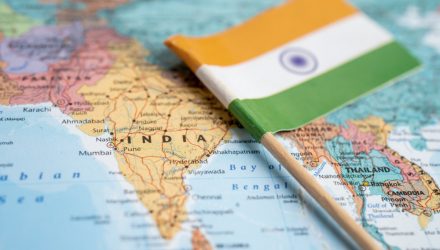While India’s presidency is largely ceremonial, the swearing-in of Droupadi Murmu in the position does have some significance. Not only is Murmu the second-ever female president of India and the first from the country’s Indigenous tribal communities, but her swearing-in also represents yet another sign that the country is looking to modernize and serve the traditionally underserved.
The New York Times recounts a story about how, until last month, Murmu’s sister-in-law Churamuni Tudu lived in a remote village that lacked electricity. But after news outlets reported that some people in the remote eastern village of Uparbeda, where Murmu grew up, were still living without electricity, workers were sent to connect Tudu and other residents to the grid.
“Now I don’t have to walk half an hour to an acquaintance’s to charge my mobile,” Tudu said. “My grandchildren can read in the evening time when they come to visit me.”
Prime Minister Narendra Modi’s governing Bharatiya Janata Party said Murmu’s “prominence will bring attention to the needs of India’s hundreds of officially recognized tribes, many of whose members live in remote, impoverished villages like Uparbeda,” according to the Times.
Since 2015, India has been working to accelerate the country’s economic growth through the government’s “Digital India” campaign by pushing government and banking services online and by investing in technology. The pandemic has accelerated this trend.
India is on track to be the third-largest country in terms of GDP, with $10.8 trillion projected in 2031. By 2030, the country’s working population is expected to cross 1 billion, the largest in the world. This would also lead India to have nearly 800 million digital content users by 2025.
India is the second-largest exposure in EMQQ Global’s Next Frontier Internet & Ecommerce ETF (FMQQ) and the entire focus of the India Internet and Ecommerce ETF (NYSE Arca: INQQ).
“India is a significant part of our strategies. It’s our second largest exposure in FMQQ with a weighting over 16%,” said Kevin T. Carter, founder and CIO of EMQQ Global. “That is expected to grow in our upcoming rebalance and for the foreseeable future.”
Carter added that India is also “one of the most exciting pockets in the global equity landscape when you consider the size of the market, the growth in the economy, and the very low penetrations rates. Its tech ecosystem today is where China was 10 years ago, and where the U.S. was two decades before.”
FMQQ is designed to provide investors with exposure to the internet and e-commerce sectors of the developing world. FMQQ seeks to provide investment results that, before fees and expenses, generally correspond to the price and yield performance of the Next Frontier Internet and Ecommerce Index.
Meanwhile, INQQ intends to capitalize on India’s rapidly growing digital and e-commerce sectors. INQQ seeks to provide investment results that, before fees and expenses, generally correspond to the price and yield performance of the India Internet and Ecommerce Index.
Both funds have an expense ratio of 0.86%.
For more news, information, and strategy, visit our Emerging Markets Channel.

